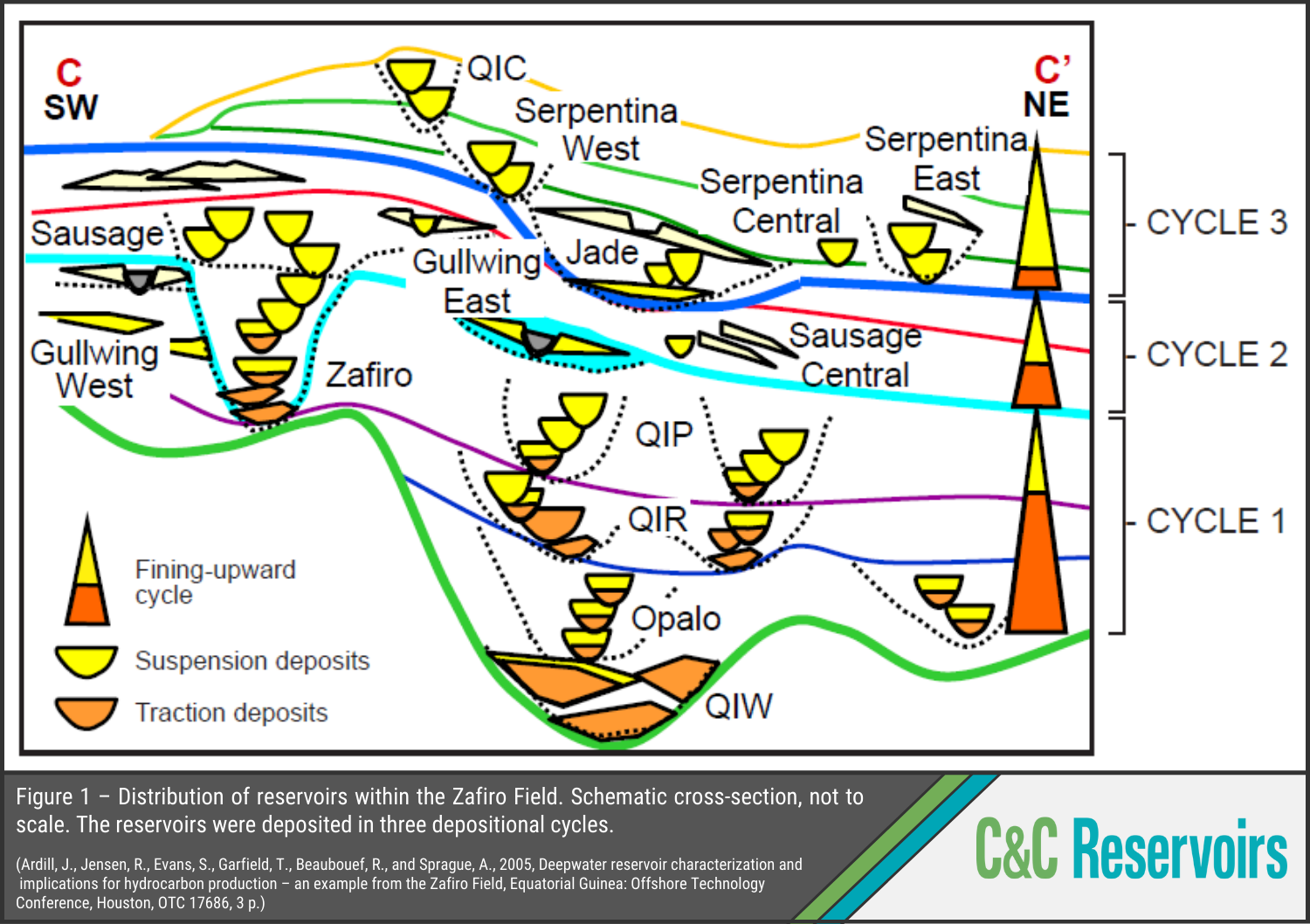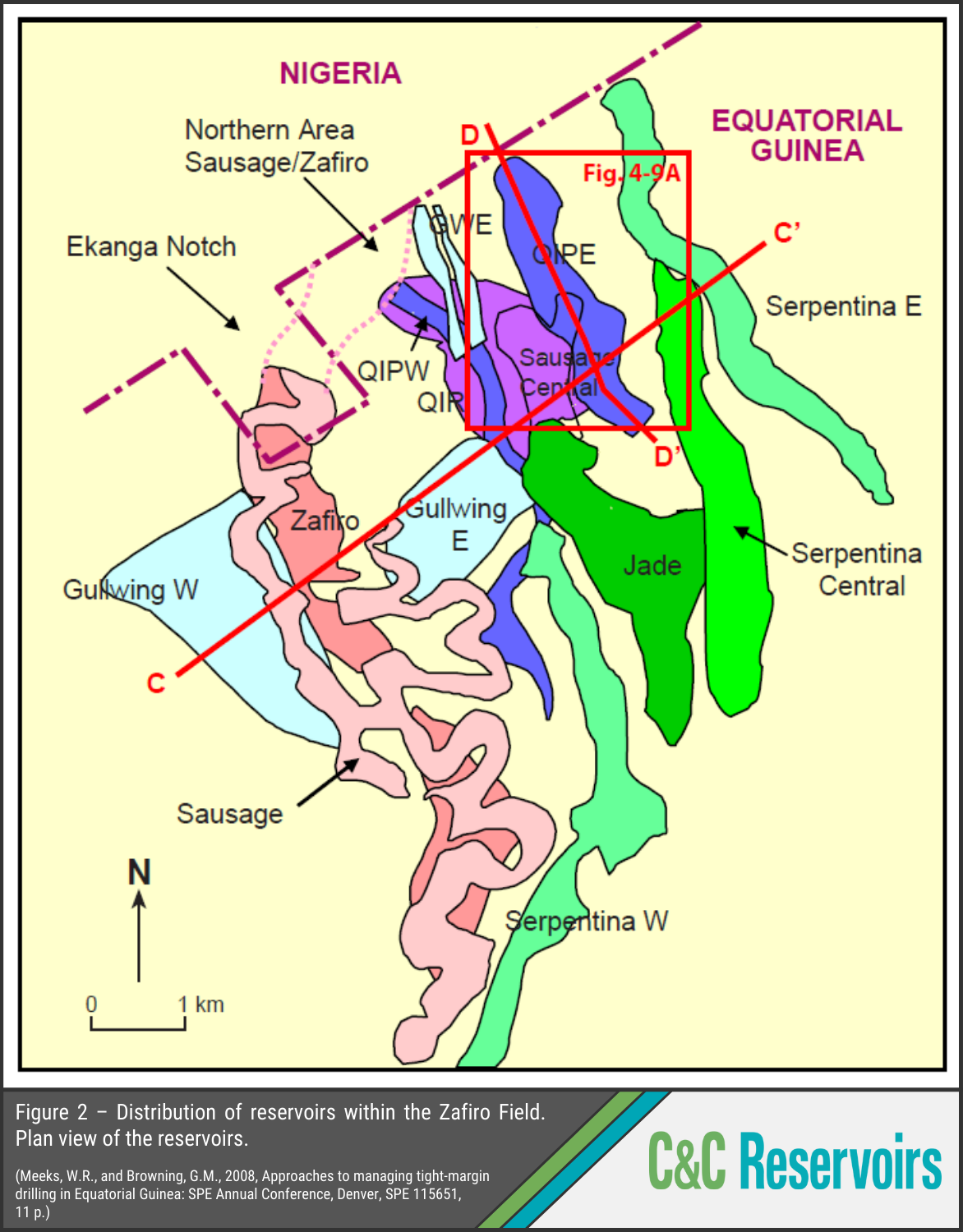The Zafiro Field
Analogue Spotlight
This week’s Analogue Spotlight focuses on the Zafiro Field (Equatorial Guinea). Oil production began only 18 months after the field’s discovery in 1995, and despite the drilling of only four wells and prior to 3-D seismic availability, a fast-track development was sanctioned to maximize economic value.
The field has undergone several IOR techniques since initial production began, while repeat seismic surveys have also been carried out. The detection and mapping of the channel systems from the 3-D and 4-D seismic improved the understanding of reservoir distribution and fluid movements (Figures 1 & 2). This new data, combined with experience in other deep-water fields, meant the initial interpretation could be revised, and the complex was extended. Three depositional cycles with multiple stacked channels containing 15 producing reservoirs are now interpreted within the canyon containing the Zafiro Field.
The discovery of additional reservoirs and improved recovery techniques meant the initial EUR estimate of 180 MMBO increased to 1318 MMBO!
The Digital Analogue Knowledge System (DAKS™) contains many global oil and gas analogues specifically focused on heavy oil fields. Use these analogues to benchmark your own field, and delve into C&C Reservoirs Reservoir Evaluation Reports to discover best practices from top performing reservoirs that can be applied to your own assets.


